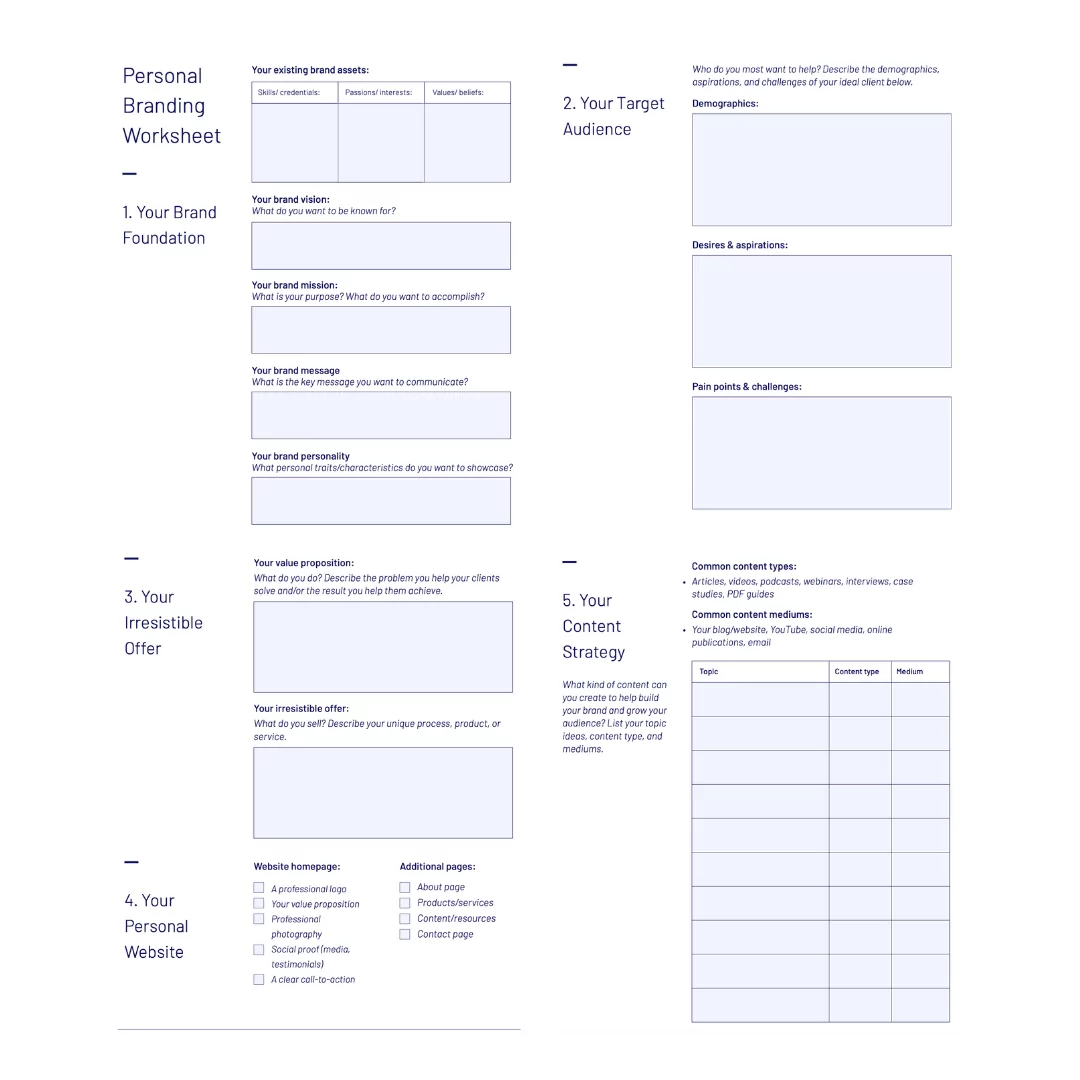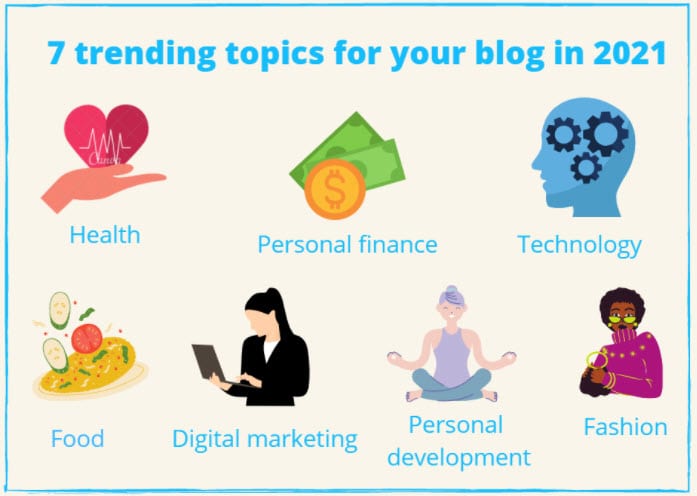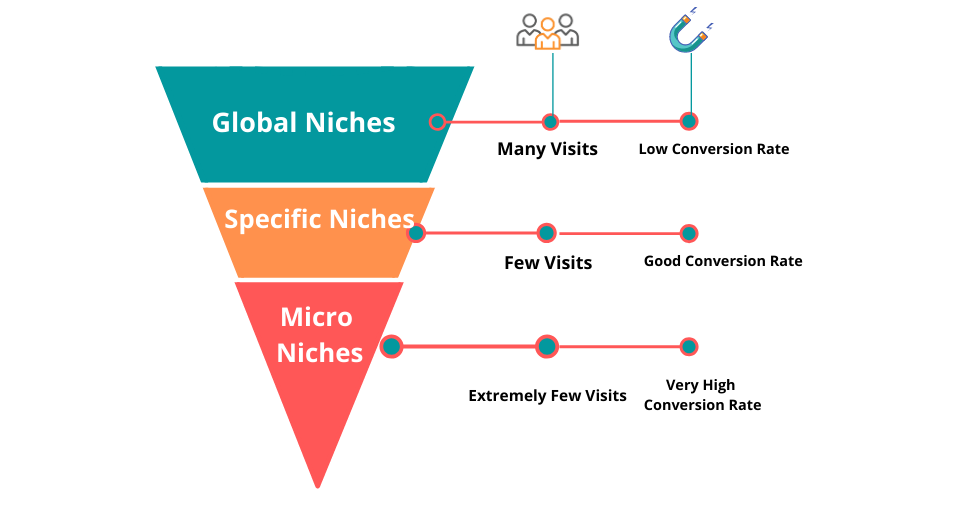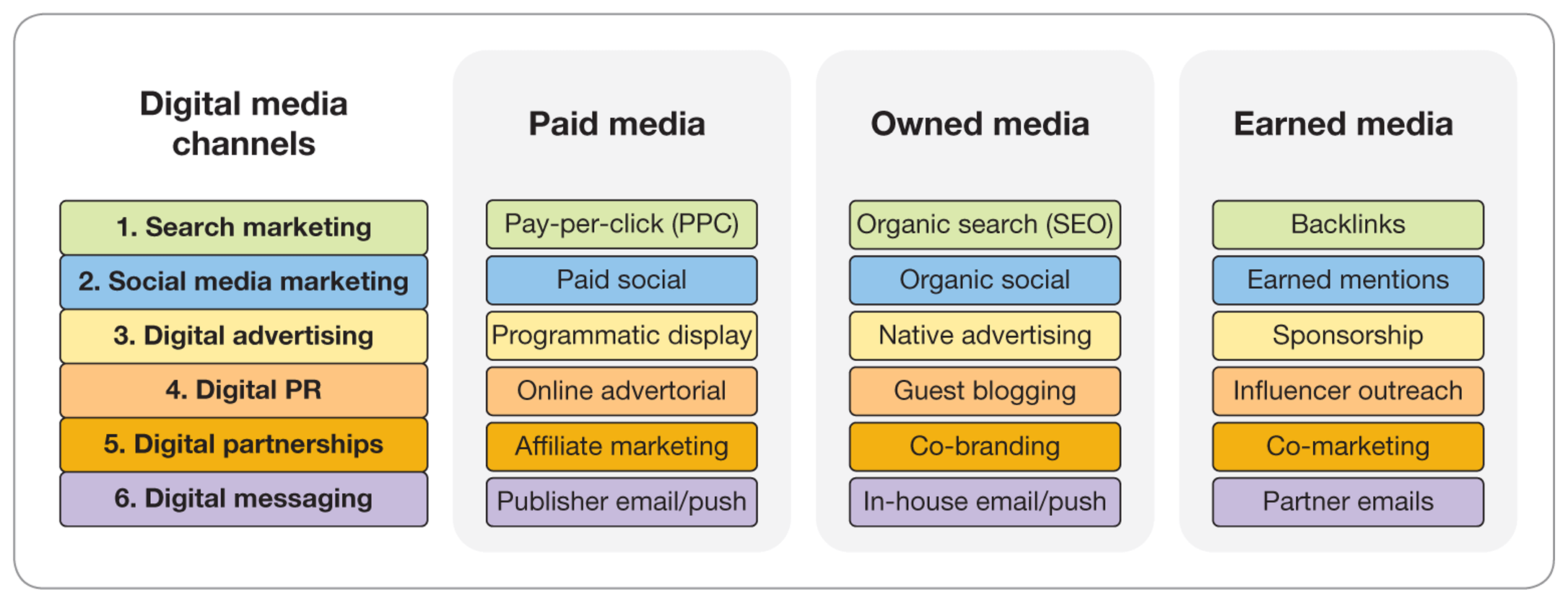Personal brand website content is crucial for showcasing your unique identity. It helps you connect with your audience and build trust.
Your website should reflect who you are and what you offer. It’s a digital space where your personality shines and your skills are highlighted. Crafting effective content can set you apart from others. This is where visitors learn more about you and your work.
Having compelling content is essential. It tells your story and engages visitors. A personal brand website is your online introduction. It invites people to explore what makes you special. It’s a space where creativity meets professionalism. Knowing what to include can be challenging. But with the right elements, your website becomes a powerful tool. It’s your chance to make a memorable impression.
Crafting Your Unique Story
Every person has a story to tell. This story sets them apart. Crafting your unique story is vital for a personal brand website. It’s more than just details about your work. It reveals who you are. Your story is your essence. It builds a connection with your audience. It makes you memorable. Here’s how to start crafting your unique story.
Defining Your Personal Brand
Your personal brand is your identity online. It tells others who you are. Begin by asking yourself key questions. What do you want people to know about you? What do you stand for? These answers shape your brand. They guide your story. Consistency in your brand message is crucial. It ensures people remember you. A clear brand makes your story believable.
Identifying Core Values
Core values are fundamental beliefs. They influence your actions and decisions. Identify what matters most to you. Integrity, creativity, and passion are examples. These values should reflect in your story. They show what you care about. Sharing your values builds trust. It attracts like-minded people. Authentic values make your story powerful.

Credit: thrivethemes.com
Design Essentials
Crafting content for a personal brand website requires clarity and authenticity. Use simple words to express your unique story and values. Engaging narratives and direct communication help connect with audiences effectively.
Design is a crucial component of your personal brand website. It communicates who you are before visitors even read a word. The right design can captivate your audience and make them want to learn more about you. Let’s dive into some design essentials that will set your website apart. ###Choosing The Right Color Palette
Your color palette should reflect your personality and the message you want to convey. Think about how different colors make you feel. Blue often signifies trust and professionalism, while red can evoke passion and excitement. Don’t overwhelm your visitors with too many colors. Stick to three or four that complement each other. Tools like Adobe Color can help you find harmonious combinations. Consider what colors your competitors use. Do you want to blend in or stand out? Your choice can significantly impact how your audience perceives you. ###Selecting Fonts And Layouts
Fonts play a key role in your website’s readability and style. Sans-serif fonts like Arial are clean and modern, while serif fonts like Times New Roman add a classic touch. Ensure your font choices are easy to read on all devices. Test them on your phone and tablet. Your audience will thank you for it. Layout is equally important. A cluttered page can frustrate visitors. Use white space strategically to guide the eye and highlight important content. Ask yourself: Does your layout direct visitors to your most important information? A well-organized site keeps users engaged and encourages them to explore further. Designing a personal brand website requires intentional choices. What story do your colors and fonts tell? Your design decisions will speak volumes about who you are and what you offer.Creating Engaging Content
Crafting content for a personal brand website involves creating engaging stories that reflect authenticity. Highlight unique experiences and insights to connect with your audience. Use clear language to convey your message effectively and build a lasting impression.
Creating engaging content for your personal brand website can be a game changer. It’s not just about filling up space with words. It’s about telling your story in a way that captures attention and builds trust. When you write with authenticity and clarity, your audience feels connected and valued. This connection can turn casual visitors into loyal followers.Writing Your Bio
Your bio is more than just a summary of your resume. It’s an opportunity to showcase your personality and values. Start with a few sentences that highlight who you are and what you stand for. Think about what makes you unique. Is there a specific experience that shaped your journey? Share it. Personal stories can make your bio more relatable. Also, don’t forget to add a touch of humor or a fun fact to make your bio memorable.Showcasing Your Expertise
Your expertise is what sets you apart. Highlight it in a way that resonates with your audience. Use clear, concise language to explain what you do and why it matters. Consider creating a list of your skills or accomplishments. This not only provides clarity but also establishes credibility. If you have relevant experience or projects, mention them with specific examples. Ask yourself, how can you add value to your audience? Maybe it’s through a blog post series or a downloadable resource. Whatever it is, ensure it aligns with your brand message.
Credit: wpminds.com
Visual Impact
Visual elements on a personal brand website are crucial. They capture attention and communicate your message effectively. A powerful visual impact can enhance user experience and build trust. The right visuals can set you apart from the competition and help your brand stand out.
Incorporating High-quality Images
Images are vital for creating a lasting impression. High-quality images can convey professionalism and credibility. Use images that reflect your brand’s personality and values. Ensure they are clear and well-composed. Poor-quality images can detract from your message.
Choose images that resonate with your audience. Consider their preferences and needs. Always compress images for faster loading times. Slow websites can frustrate visitors and lead to higher bounce rates.
Utilizing Video Content
Video content engages users in ways images cannot. Videos can showcase your brand story or explain complex topics. They offer a dynamic way to connect with your audience. Keep videos short and to the point. Attention spans online are limited.
Optimize video content for different devices. Ensure compatibility on mobile and desktop. Good video content can increase time spent on your site. It also enhances user interaction and encourages sharing.
Building Trust With Testimonials
Testimonials build trust on personal brand websites. They show real experiences from satisfied clients. This boosts credibility and attracts potential customers.
Building trust is a crucial element of personal branding, and testimonials are a powerful tool to achieve this. They act as social proof, demonstrating that others have benefited from your services or products. Showcasing genuine feedback can bridge the gap between you and potential clients, making your brand more relatable and trustworthy. Let’s dive into how you can effectively use testimonials to build trust.Collecting Client Feedback
Start by reaching out to your past clients for their feedback. A friendly email or a quick phone call can go a long way. Ask them specific questions that highlight different aspects of your service or product. Consider using a feedback form with open-ended questions. This allows clients to provide detailed responses. Their words might capture nuances of your service that you hadn’t considered. Also, make it easy for them. Offer multiple ways for them to share their thoughts—via email, social media, or through a dedicated testimonial page on your website.Highlighting Success Stories
Once you have feedback, turn them into compelling success stories. Highlight the transformation clients experienced due to your service. Specific examples can be more persuasive than general praise. Use a structured format to present these stories. Start with the client’s problem, describe how you helped solve it, and finish with the positive outcome. This narrative approach makes the testimonial relatable and engaging. Don’t forget to keep it real. Authenticity resonates more than polished perfection. Share stories that showcase the true impact of your work. How do you decide which testimonials to feature prominently? Focus on those that align with your brand values and speak directly to your target audience’s pain points. This alignment reinforces your brand message and builds deeper trust. What’s the most memorable testimonial you’ve ever received? This might be the one to spotlight, as it likely captures your brand’s essence and effectiveness.Seo Strategies For Visibility
Crafting clear content is vital for a personal brand website. Focus on keywords related to your expertise. This improves search engine rankings and attracts your target audience. Keep sentences concise and relevant to maintain reader interest.
Creating a personal brand website is more than just showcasing your skills and achievements; it’s about standing out in the digital world. A crucial aspect of this visibility is harnessing effective SEO strategies. These strategies ensure that your website not only attracts visitors but also ranks high on search engines, making it easier for potential clients or employers to find you. ###Choosing Relevant Keywords
Choosing the right keywords is like setting the stage for your audience. Think about what terms someone would use to find your expertise. Use tools like Google Keyword Planner to discover what people are searching for in your field. Don’t just pick generic keywords. Instead, focus on specific phrases that align with your niche. For instance, if you’re a graphic designer, instead of using “designer,” try “freelance graphic designer in New York.” Engage with your audience. Ask yourself: what problems are you solving for them? This will guide you in selecting keywords that resonate with their needs. ###Optimizing Page Titles And Descriptions
Your page title is the first impression you make on search engines. It should clearly represent the content of the page while including your primary keyword. Keep it concise and compelling. Meta descriptions, on the other hand, are your opportunity to hook a potential visitor. They should expand on the page title and entice users to click through. Include a call to action if possible, like “learn more” or “discover how.” Remember, search engines also read these descriptions. Use natural language that is both informative and appealing. For example, “Explore our top design tips and elevate your brand’s visual identity today.”Connecting Through Social Media
Connecting through social media is crucial for any personal brand website. It enhances visibility and builds relationships with your audience. This section explores how to effectively integrate and engage through social media platforms. Let’s dive into the details of integrating social links and engaging with your audience.
Integrating Social Links
Ensure your website features clear social media links. Place these links in easily accessible areas. The header and footer are great spots. Visitors should find them without any effort. This encourages interaction and sharing.
Use recognizable icons for each platform. This aids in quick identification. It also boosts user experience. Make sure links open in new tabs. This keeps visitors on your site. Increases their browsing time. Consider using widgets for real-time updates. They provide dynamic content.
Engaging With Your Audience
Social media is a two-way street. Engage actively with your followers. Respond to comments promptly. Show appreciation for their input. Create polls and ask questions. This encourages interaction and builds community.
Share valuable content regularly. Focus on what interests your audience. Keep posts relevant and engaging. Use visuals to capture attention. Videos and images work well. Regular updates maintain interest. They keep your audience coming back. Collaborate with influencers in your niche. This expands your reach.
Analyzing Performance Metrics
Analyzing performance metrics for personal brand website content involves tracking visitor engagement and content effectiveness. This process identifies popular sections, helping refine strategies to boost audience connection and retention. Regularly reviewing these metrics supports continuous improvement in conveying your brand message.
Analyzing the performance metrics of your personal brand website is crucial for understanding what resonates with your audience and what needs improvement. By examining these metrics, you can make informed decisions that enhance user experience and drive engagement. Let’s break down how you can effectively track and adjust your content to achieve better results.Tracking Visitor Data
Understanding who visits your website and what they do there is the first step in optimizing your content. Use tools like Google Analytics to track important metrics like page views, bounce rates, and average session duration. This data helps you identify which pages are performing well and which ones need attention. Consider setting up goals to measure specific actions, such as newsletter sign-ups or downloads. These goals give insights into how effectively your content is guiding visitors towards desired outcomes. Ask yourself, are visitors engaging with your call-to-action or simply passing by? Don’t just look at numbers—look for patterns. Are there particular times of day or week when traffic spikes? Does a certain blog post consistently attract more visitors? Use this information to refine your content strategy.Adjusting Content For Better Results
Once you’ve gathered your data, the next step is to adjust your content to improve performance. If a page has a high bounce rate, it might indicate that the content isn’t meeting visitor expectations. Consider revising headlines or adding more engaging visuals to capture attention. Sometimes small tweaks can make a big difference. Try changing the layout or updating old information. Refreshing content can boost SEO and keep your audience engaged. Engage with your audience directly. Use surveys or feedback forms to understand what they want to see more of. Tailor your content based on this feedback to increase satisfaction and retention. What adjustments can you make to ensure your website not only attracts visitors but also keeps them coming back?
Credit: www.thinkific.com
Frequently Asked Questions
What Should I Include In My Personal Website?
Include an engaging bio, professional portfolio, clear contact information, social media links, and a blog. Optimize for SEO with relevant keywords and responsive design. Highlight your skills, achievements, and testimonials to build credibility and attract visitors. Ensure easy navigation and visually appealing design for the best user experience.
What Is The Best Content For Personal Branding?
Create authentic content showcasing expertise, values, and personality. Share success stories, insights, and experiences. Engage with audiences through blogs, videos, and social media. Use visuals to enhance storytelling. Consistently update and optimize content for search engines. Highlight unique skills and build a strong online presence.
What Are The 5 C’s Of Personal Branding?
The 5 C’s of personal branding are Clarity, Consistency, Creativity, Communication, and Credibility. Clarity defines your unique value. Consistency ensures uniformity across platforms. Creativity sets you apart. Communication engages your audience. Credibility builds trust and authenticity. These elements together strengthen and shape your personal brand effectively.
What Are The 5 A’s Of Personal Branding?
The 5 A’s of personal branding are Authenticity, Authority, Aspiration, Affinity, and Articulation. Authenticity builds trust. Authority establishes expertise. Aspiration inspires others. Affinity creates connections. Articulation clearly communicates your brand message. These elements help in establishing a strong personal brand.
Conclusion
A personal brand website boosts your online presence effectively. It speaks about who you are and what you offer. Content should reflect your personality and skills clearly. Keep it engaging and simple. Use words that connect with your audience. Highlight achievements without bragging.
Make navigation easy for visitors. Let your website tell your story. Focus on authenticity and clarity. Every detail matters in building trust. Regular updates keep your site fresh. A well-crafted website is your digital handshake. It opens doors to new opportunities.
Invest time in crafting your personal brand online. Your future self will thank you.




